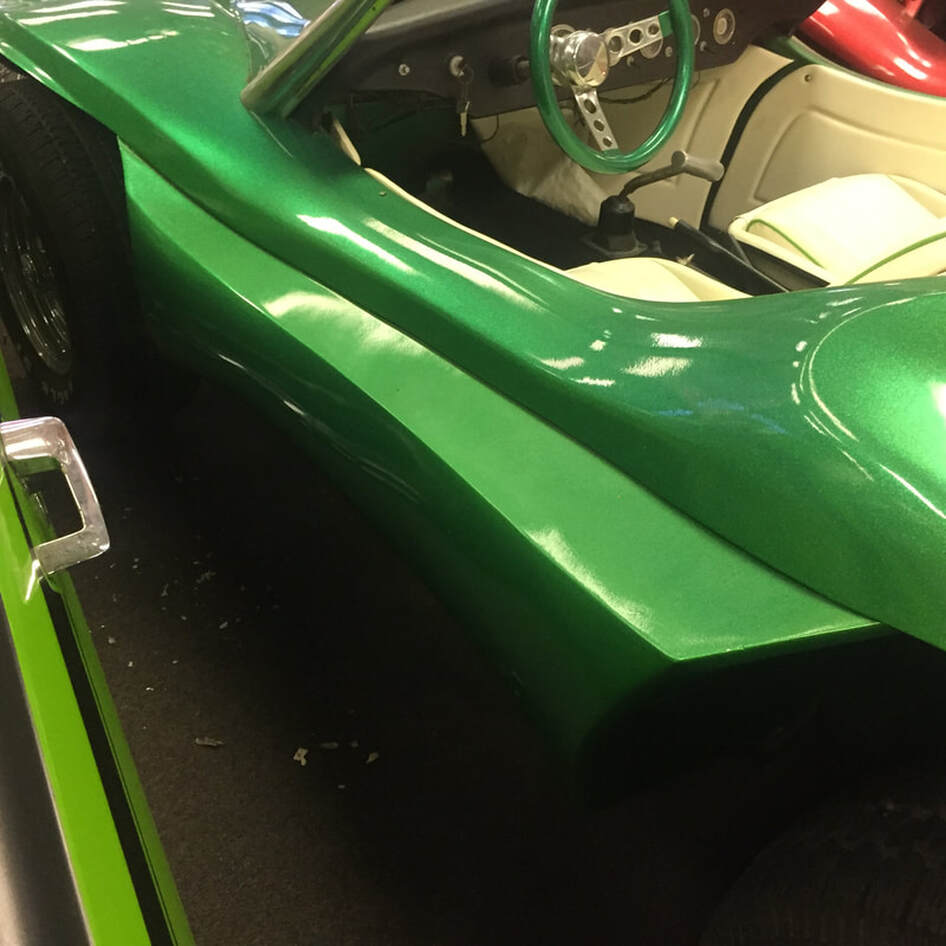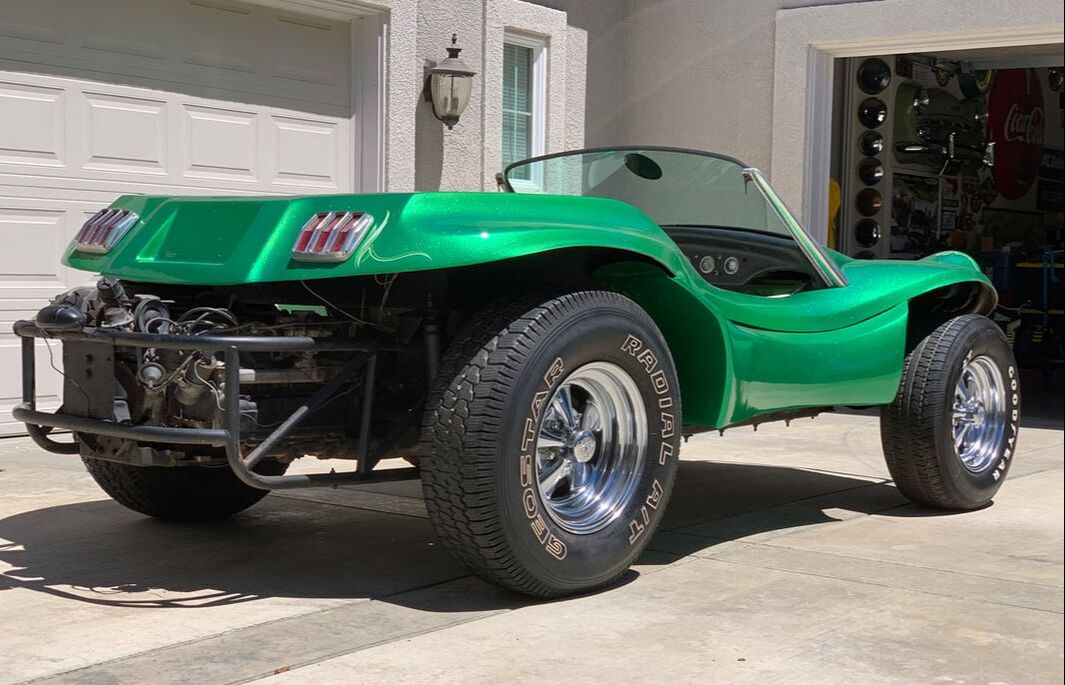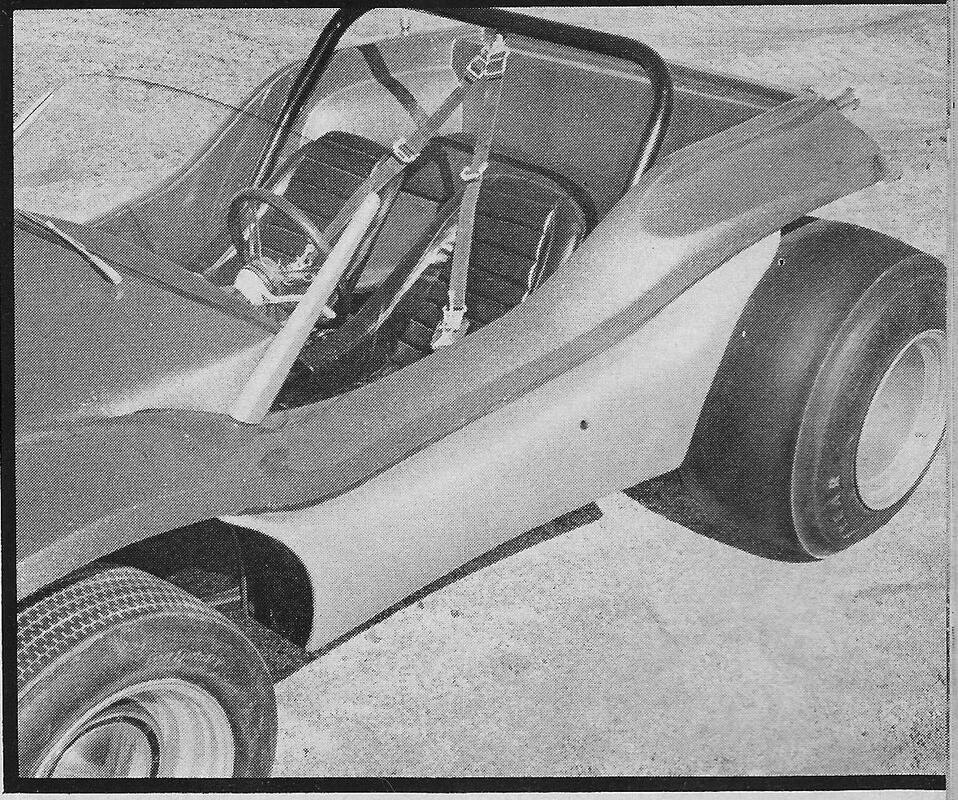Bounty Hunter Dune Buggy

I sold a car and part of the transaction included me getting this Bounty Hunter. It was built in the early 70's and has a Hadley Engineering Transvair adapter that bolts up a complete Chevrolet Corvair drive train. The Bounty Hunter was designed by Mel Keys to sit on a shortened 80 inch VW pan.
Follow along for additional pictures and information. I have not yet driven it but am doing what I can to get it back on the road.
Follow along for additional pictures and information. I have not yet driven it but am doing what I can to get it back on the road.
This was my first look at the Bounty Hunter. There were several other Dune Bugs in this collection but I really liked this one. These pictures were my first look. I wasn't able to see the car until it showed up at my house.
The engine looks rough but and was reported to have last run about 10 years ago.
The interior was completely redone. They had to drive it to the upholstery shop and that's when it last ran.
Love the green metal flake on the buggy and the steering wheel.
Getting ready for loading on the transport
I was in Mexico when it showed up at my house so my brother was there to make sure it was safely unloaded and put away in the garage

The hardtop adds to the already great look. I have the one that came with mine although they added a hinge to make entry/exit easier.
Credit for the basic dune buggy shape goes to designer Mel Keys who created the first swoopy
shaped buggy or Bounty Hunter shape. Mel's original design was modified by his partner Brian Dries who later adapted the
concept for market and the Bounty Hunter was born. The result was an impressive and very unique car with demand for this
body resulting in the founding of Glass Enterprises of Burbank California by Dries. The number of Bounty Hunter bodies
produced is unknown to me, but the company folded in 1971, along with most other buggy manufacturers.
"Here are pictures of a scale model and a picture of the Bounty Hunter prototype. And a picture of the first body made. This was done in 1968, About 3-4 months were spent creating the prototype. Brian and I worked on this together. After we made a few bodies he changed the original design and went into business himself. I went on to other pursuits. Notice the original has 5 inch headlights. Brian's version had larger headlights,
and he added a bulge on the hood."
Melvin Keys
shaped buggy or Bounty Hunter shape. Mel's original design was modified by his partner Brian Dries who later adapted the
concept for market and the Bounty Hunter was born. The result was an impressive and very unique car with demand for this
body resulting in the founding of Glass Enterprises of Burbank California by Dries. The number of Bounty Hunter bodies
produced is unknown to me, but the company folded in 1971, along with most other buggy manufacturers.
"Here are pictures of a scale model and a picture of the Bounty Hunter prototype. And a picture of the first body made. This was done in 1968, About 3-4 months were spent creating the prototype. Brian and I worked on this together. After we made a few bodies he changed the original design and went into business himself. I went on to other pursuits. Notice the original has 5 inch headlights. Brian's version had larger headlights,
and he added a bulge on the hood."
Melvin Keys

When asked if the original mold survived Mel stated...
"Well, I made a mistake. Brian wanted to break up the partnership and go into business for himself. So we each made a body off of the mold and then we cut up the original mold. I don't have any idea what Brian did with the mold he had. I was going to make changes to the body I had, but the Dune Buggy business tapered off, so I never pursued it after that."
Mel Keys
From left: Vern Sion, Mel Keys, Volmer Jensen (owner of the Production Models Shop)
NCC-1701 Enterprise - from sports cars and dune buggies to starships
You'd have to be a real Trekker to know that the original Enterprise model, the 11-footer used for shots in the original series, emerged from the Production Models Shop on Providencia Avenue in Burbank, California, on December 29, 1964. Based on a design by Matt Jefferies and an earlier three-foot proof-of-concept model by the Howard Anderson Company, the construction of the 225-pound model was contracted to Richard Datin, who subcontracted it to Volmer Jensen, Mel Keys and Vern Sion, mostly using wood, sheet metal rolled into tubes (the nacelles) and vacuum-formed plastic (the saucer).
Yet what most Trekkers don't know is that Mel Keys, the young man in the button-down shirt in the center of the above photo had another claim to fame in the sports car world as a builder at Victress, one of the better known fiberglass sports car builders of the 1950s and also the Bounty Hunter.
NCC-1701 Enterprise - from sports cars and dune buggies to starships
You'd have to be a real Trekker to know that the original Enterprise model, the 11-footer used for shots in the original series, emerged from the Production Models Shop on Providencia Avenue in Burbank, California, on December 29, 1964. Based on a design by Matt Jefferies and an earlier three-foot proof-of-concept model by the Howard Anderson Company, the construction of the 225-pound model was contracted to Richard Datin, who subcontracted it to Volmer Jensen, Mel Keys and Vern Sion, mostly using wood, sheet metal rolled into tubes (the nacelles) and vacuum-formed plastic (the saucer).
Yet what most Trekkers don't know is that Mel Keys, the young man in the button-down shirt in the center of the above photo had another claim to fame in the sports car world as a builder at Victress, one of the better known fiberglass sports car builders of the 1950s and also the Bounty Hunter.





























